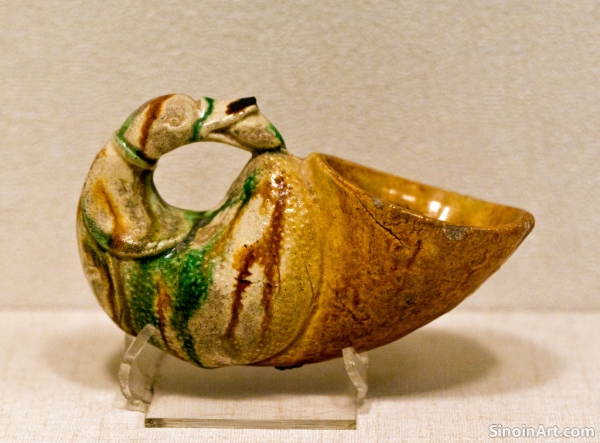Technological Advances in Tang Kilns
|
The Tang Dynasty saw significant advances in kiln technology, which enabled potters to produce ceramics of higher quality and with a greater variety of glazes and forms. The innovation of the kilns was a key part of the ceramic revolution of this period. The technical accomplishments of the Tang era are noteworthy.  The development of high-firing kilns allowed for the production of stoneware and porcelain with greater durability. The increase in temperature range of the kilns was a major technical achievement. This development allowed for a much broader range of styles.  The use of lead glazes was perfected during the Tang Dynasty, and this allowed for the creation of vibrant sancai colors. The ability to control the use of lead glazes was a key development. These technical innovations were at the heart of the era’s ceramic success.  Kiln design and construction were also improved, allowing for greater control over temperature and atmosphere during firing. This improved temperature control was essential for producing high-quality ceramics. The potters were very attuned to their kilns. The advances in Tang kiln technology had a lasting impact on later generations of ceramic artists in China and around the world. The techniques developed in the Tang era continue to be important today. These innovations made a long term impact on the ceramic arts. |
Tag : Tang kiln technology, Chinese ceramics, Kiln design, Ceramic innovation, Firing techniques
Related information
- The Economic Importance of Tang Ceramic Production
- The Influence of Foreign Cultures on Tang Ceramics
- Sancai Ware: A Symphony of Three Colors
- The Enduring Legacy of Tang Dynasty Ceramics
- Tang Ceramics and the Tea Ceremony
Tang Dynasty ceramic production was economically significant, providing employment, fostering trade both domestically and internationally, and contributing significantly to the empire’s wealth, thereby stimulating economic growth.
The Tang Dynasty’s openness to international exchange significantly influenced its ceramics, evident in the adoption of foreign patterns, vessel forms, and decorative techniques, reflecting the cosmopolitan spirit of the era.
Sancai, meaning “three-color” in Chinese, is perhaps the most iconic ceramic ware of the Tang Dynasty. These vibrant and richly glazed pieces are instantly recognizable for their combination of green, amber, and cream or straw-yellow glazes. While the term suggests a limited palette, the actual range of colors could vary, sometimes incorporating blues and purples, creating a dazzling visual spectacle. Sancai ware wasn’t just about color; it was a bold statement of Tang aesthetics and technical prowess.
The ceramic art of the Tang Dynasty represents a peak in Chinese ceramic history, leaving an enduring legacy that continues to inspire artists, collectors, and scholars today. The innovative techniques, vibrant colors, and elegant forms of Tang wares established a new standard for ceramic production, influencing subsequent generations of potters both in China and around the world.
While not as central as in later periods, the tea ceremony was beginning to gain popularity during the Tang Dynasty, and this had a subtle but significant impact on ceramic production. The growing appreciation for tea and the rituals surrounding its consumption influenced the development of specific ceramic forms and styles. The Tang tea culture, while not as formalized as in later dynasties, laid the groundwork for the widespread use of ceramics in tea service.